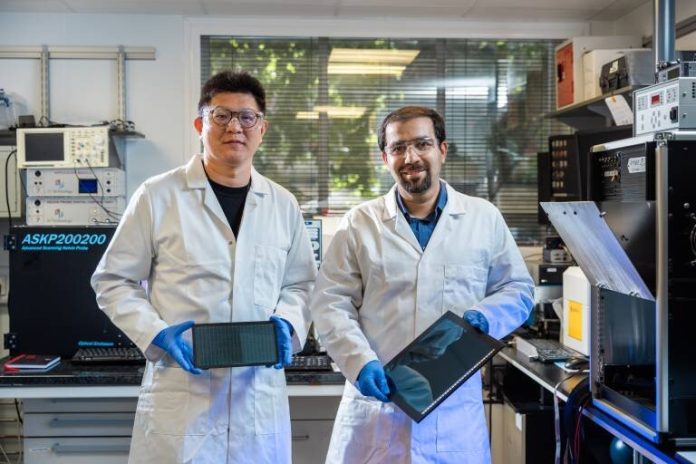
Imagine a world where your TV remote, wireless keyboard, home alarm, or smart sensors never need new batteries.
That future may be closer than you think, thanks to new indoor solar cells developed by an international team led by University College London (UCL) researchers.
The scientists have created durable solar cells that can efficiently harvest energy from indoor light—whether from lamps, LEDs, or sunlight streaming through a window.
Unlike traditional silicon solar panels, which are mainly designed for outdoor use, these cells are made from a material called perovskite, which can be specially tuned to capture the specific wavelengths of indoor light.
Perovskite has been attracting attention in recent years for its potential to revolutionize solar energy.
However, it comes with one big problem: tiny flaws in its crystal structure, called “traps,” can stop electrons in their tracks, wasting energy and wearing down the material. Until now, this has made perovskite devices less durable, often lasting only weeks or months.
The UCL-led team found a way to fix this. They treated the perovskite with a carefully chosen mix of three chemicals.
First, they added rubidium chloride, which encouraged the crystals to grow more evenly and with fewer defects.
Then, they added two other chemicals to stabilize two types of ions—iodide and bromide—that tend to drift apart over time and damage the material. Together, these treatments greatly reduced the number of “traps” and kept the crystal structure stable.
Lead researcher Dr. Mojtaba Abdi-Jalebi from UCL’s Institute for Materials Discovery says the implications are huge. “Billions of small devices rely on disposable batteries, which is unsustainable.
As the Internet of Things grows, this problem will only get bigger. Our new indoor solar cells can harvest much more energy than commercial options and last far longer, opening the door to electronics powered by the light already around us.”
The results speak for themselves. In tests, the new cells converted 37.6% of indoor light—at brightness similar to a well-lit office—into electricity.
This is a world record for perovskite solar cells designed for indoor use. They are also about six times more efficient than the best commercial indoor solar cells currently available.
Durability was another key improvement. After more than 100 days of use, the treated solar cells retained 92% of their original performance, compared to just 76% for untreated perovskite cells. In harsher tests, where the cells were exposed to continuous bright light and heat of 55°C for 300 hours, the treated cells kept 76% of their performance, while the untreated ones dropped to less than half.
Dr. Abdi-Jalebi says another advantage is cost. “Perovskite solar cells use abundant materials and simple manufacturing processes. They can even be printed, like a newspaper, making them cheap to produce at scale.”
The team is now in talks with industry partners to explore how to bring the technology to market. If all goes well, battery-free electronics could start appearing in homes and offices in the not-too-distant future—powered not by disposable batteries, but by the light already shining around us.
Source: UCL.



